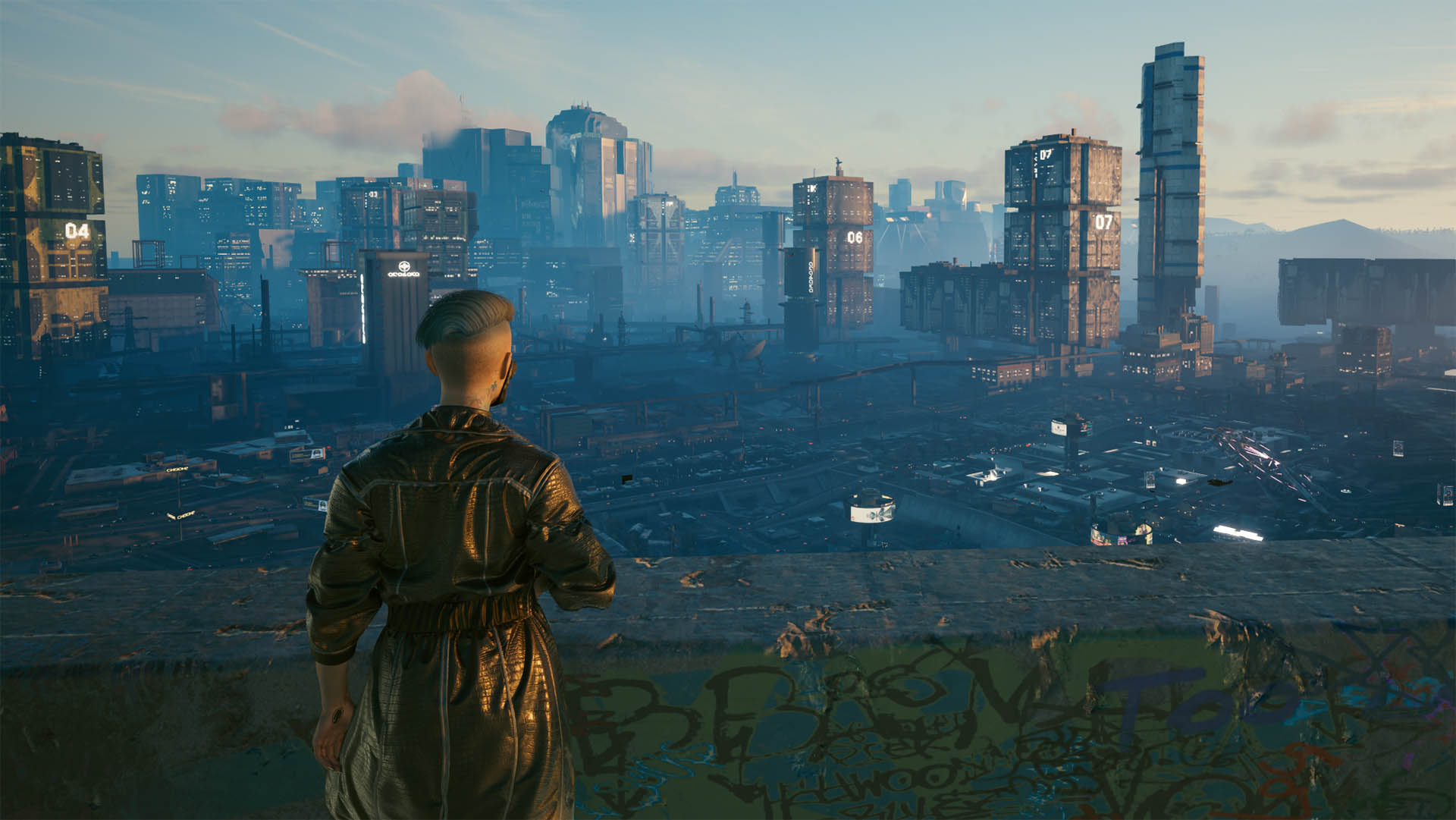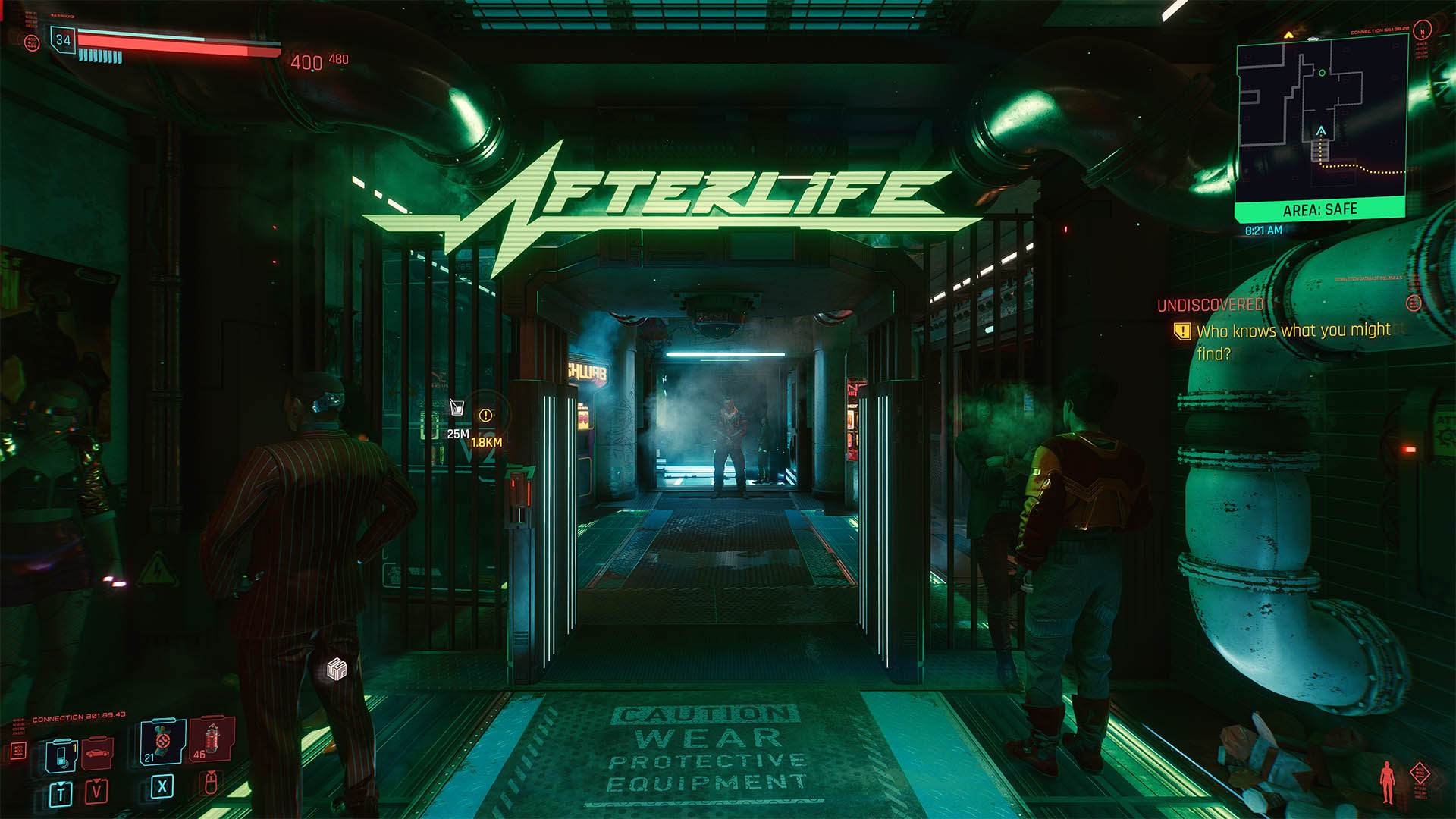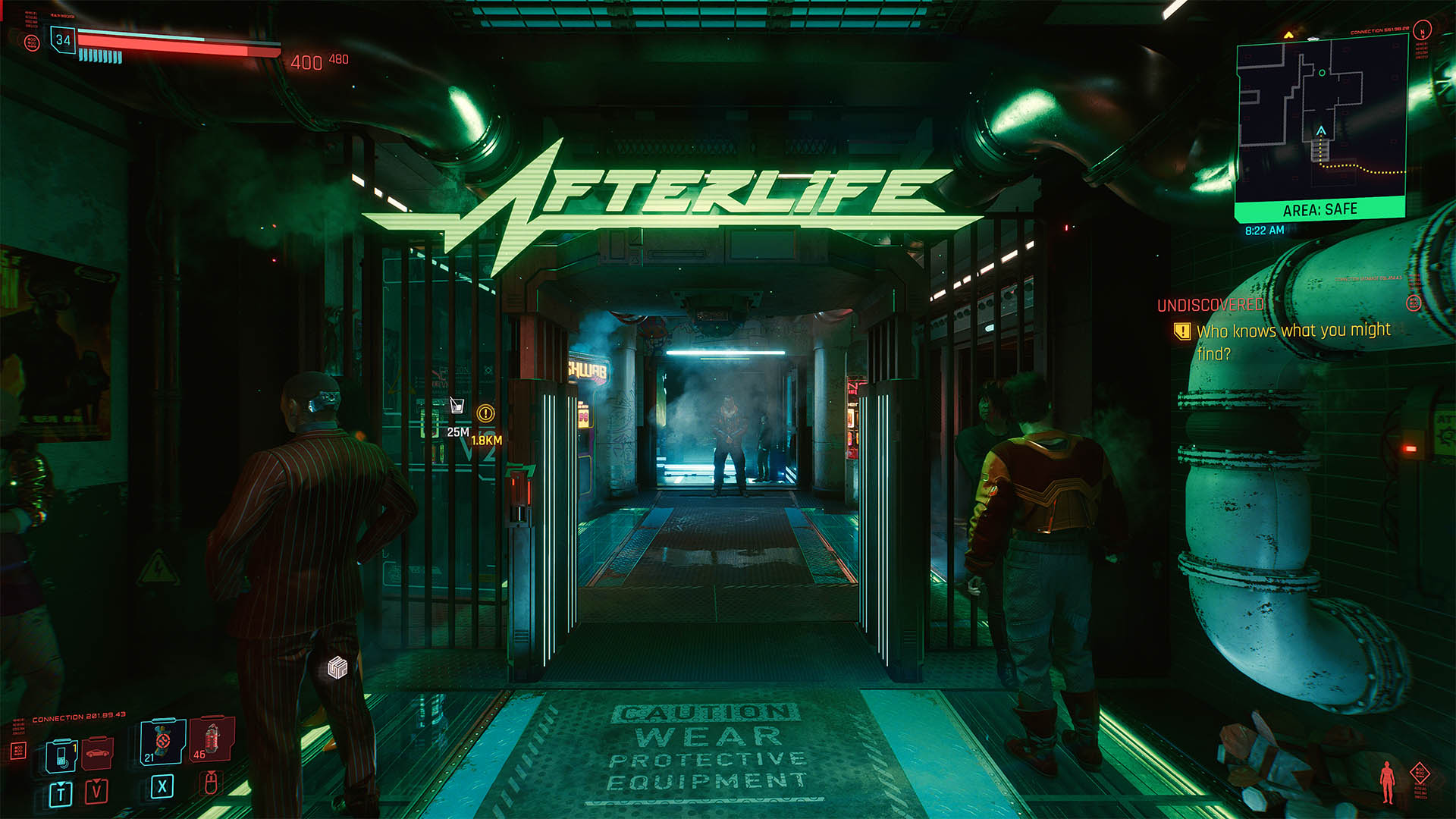Even AMD's $999 RX 6900 XT can't cope with Cyberpunk 2077's new Radeon ray tracing mode
There's little to gain and much to lose from Cyberpunk's demanding ray tracing settings.

With the arrival of a mammoth patch from CD Projekt Red for Cyberpunk 2077 it is now possible to enjoy the shiny floors and bright lights of Night City with an AMD graphics card. Specifically, the Radeon RX 6000-series cards, fitted with the latest RDNA 2 architecture, are now capable of a little real-time ray tracing in Cyberpunk 2077.

Best gaming monitor: pixel-perfect panels for your PC
Best 4K monitor for gaming: when only high-res will do
Best 4K TV for gaming: big-screen 4K PC gaming
And I say 'a little' for good reason.
The latest Cyberpunk patch is a more than modest 33GB install (actually a little more space will be required to download), and its significant size is largely explained by the 484 bug fixes it includes for the PC version. Bundled alongside that is the arrival of AMD-powered real-time ray tracing in-game, a feature notable by its omission from the launch day roster.
It's an interesting prospect for anyone rocking the latest AMD silicon, too, as Cyberpunk 2077 may pose the biggest challenge for RDNA 2 silicon since, well, ever. The game is tough going without even a drop of ray tracing to speak of. Furthermore, AMD is contending with more powerful ray tracing silicon in Nvidia's RT Cores, which have proven themselves more capable than AMD's Ray Accelerators.
With that being said, the truth lies in the numbers. So I've blown the dust off my Cyberpunk install and taken the Radeon RX 6900 XT and Radeon RX 6700 XT for a spin in-game to tell you whether it's all worth it.
First up, the Radeon RX 6900 XT. This is AMD's top card and an absolute stunner in rasterised performance. It's just a shame it's kind of pricey next to the RX 6800 XT and GeForce RTX 3080. Nevertheless, this GPU offers RDNA 2 at its absolute finest, and that means it's the flagship for red team ray tracing performance in Cyberpunk 2077.
My benchmark run is a quick lap around the Afterlife club, which has become a sort of picturesque place in-game for ray tracing capability. As such, you may find a little more performance out in the streets, or a little less when you get into heavy combat.
Keep up to date with the most important stories and the best deals, as picked by the PC Gamer team.
| Row 0 - Cell 0 | Avg | Min |
| 4K - Ultra - RT off | 44 | 28 |
| 4K - RT Medium | 17 | 13 |
| 4K - RT Ultra | 11 | 9 |
| Row 4 - Cell 0 | Row 4 - Cell 1 | Row 4 - Cell 2 |
| 1440p - Ultra - RT off | 85 | 36 |
| 1440p - RT Medium | 34 | 25 |
| 1440p - RT Ultra | 23 | 19 |
As you can see in the table above, you're looking at a pretty significant drop in performance from the Ultra preset to the Ray Tracing Medium preset in-game. There are no ray-traced reflections at this grade, only shadows and 'medium' lighting, but even so it's tough going for even the top RDNA 2 card.
Ray-traced reflections, possibly the most clearly noticeable ray tracing effects of the lot, is introduced with the Ray Tracing Ultra preset. This setting sees a dramatic reduction in performance that creeps down to single digits at times.
Needless to say, neither inspires much hope for smooth framerates, not even 30fps, at 4K.
Perhaps that's a given. Even without ray tracing, the Radeon RX 6900 XT struggles to manage a steady 60fps at Ultra in 4K. 1440p is a much more admirable goal in that regard. The RX 6700 XT hits a decent average of 85fps with no ray tracing enabled, and nearly maintains a steady 30fps or more with ray tracing enabled, but not cranked all the way up.
It's still far from what I would call smooth going, however. It's a mighty reduction in performance for a handful of visual effects.
| Row 0 - Cell 0 | Avg | Min |
| 1080p - High - RT off | 102 | 39 |
| 1080p - Ultra - RT off | 91 | 44 |
| 1080p - RT Medium | 34 | 25 |
| 1080p - RT Ultra | 24 | 19 |
CPU: AMD Ryzen 7 5800X
Motherboard: MSI GODLIKE X570
Memory: Corsair Vengeance 32GB @ 2,666MHz
Storage: 1TB WD Black SN750
CPU Cooler: G.Skill 360mm liquid cooler
PSU: EVGA 850W G2
On to the Radeon RX 6700 XT and it's a similar story. I only ran this GPU at 1080p for the purposes of this testing, which is probably a small mercy on my part because the performance cliffedge of ray tracing puts this $379 in an already rather precarious position, even at the lower resolution.
There's one salve for ray tracing in Cyberpunk 2077, or at least potential salve, in FidelityFX CAS, or Content Adaptive Sharpening. This is a sharpening and upscaling feature built in to AMD's FidelityFX GPU suite that allows for sharpening within a scene based on the scene's details.
Why might CAS have an effect on performance? I hear you ask. Used in tandem with a dynamic render resolution—a resolution that is altered on the fly based on any given scene to maintain a steady fps—CAS can cut out some of the blurriness that would otherwise be introduced by rendering at a lower resolution.
This differs from Nvidia's DLSS in that it doesn't introduce new visual information into a scene, only alters what's there for clarity. AMD's planning a new feature in FidelityFX Super Resolution for just that purpose, but it's unfortunately not out yet.




So instead it's CAS that all our hopes rest, and unfortunately it's not an altogether pleasant experience in motion (it's a little tough to tell the difference between CAS on and off in screenshots, I'll admit). For one, and I assume this is a bug that will be fixed, CAS causes a flickering of some textures during gameplay on our test system when ray tracing is enabled.
It comes and go in any given scene, but is prevalent enough that you would most likely wish to disable the feature altogether, or disable ray tracing (which also puts an end to the flicker), simply to be rid of it.
Perhaps more importantly, CAS can also introduce a significant level of blur. The effect of CAS can be adjusted for performance and clarity, so the level of blurriness really depends on what sort of performance you're after and how far you're willing to go to chase that fps dream, but it's again a little less clarity in exchange for improved visuals elsewhere—it's always a trade off, and not necessarily a worthy one.
In my testing, it all felt too much blur to justify the extravagance, and perhaps frivolous, ray tracing implementation in-game. Cyberpunk 2077 is a visually impressive game that's only marginally improved by extensive lighting and reflections, and I found that during my time with it, even with ray tracing capability on AMD's cards, higher framerates were instead my primary focus.
It's great to see AMD back on even footing with Nvidia in Cyberpunk 2077 in terms of feature support, after what was a surprising launch day omission. Yet even post-ray tracing support, my recommendation is to keep this feature disabled, even if you spent a grand on the flagship RDNA 2 card.

Jacob earned his first byline writing for his own tech blog, before graduating into breaking things professionally at PCGamesN. Now he's managing editor of the hardware team at PC Gamer, and you'll usually find him testing the latest components or building a gaming PC.

